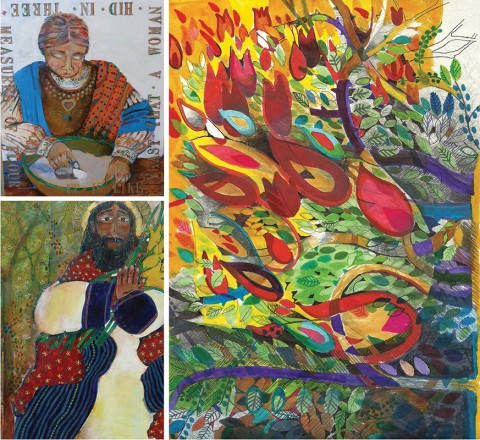The Burning Bush, Icon of the Lilies of the Field, and What Is It Like? by Elizabeth Wrightman

There’s a kind of visual poetry in Elizabeth Wrightman’s paintings—swatches of color, commentary, deep emotion, engagement. Sometimes this engagement is word with image, sometimes object and color with design. As they unfold, each scene—the burning bush, Jesus’ teaching on the lilies of the fields, the parable of the lost coin—seems given to us anew. Its recognizable elements unfold through new layers.
As Wrightman writes, the pandemic has meant that “the very patterns mapping one’s own inner world changed.” Even amid the change, the canceled exhibits, Wrightman’s work has held course. Whether exploring a Gospel text, a W. B. Yeats poem, or a segment of James Joyce’s Ulysses, she brings understanding from her ancestral lands, where “Celtic-speaking peoples seem to share a common view that there are several layers to reality: the ordinary world and another reality.”
It is this other reality, this one so verdant and wide, that perhaps helps us in ways we cannot even name. In a pandemic where the patterns mapping our inner world are changing, we are met by new images, layers, and realities.




